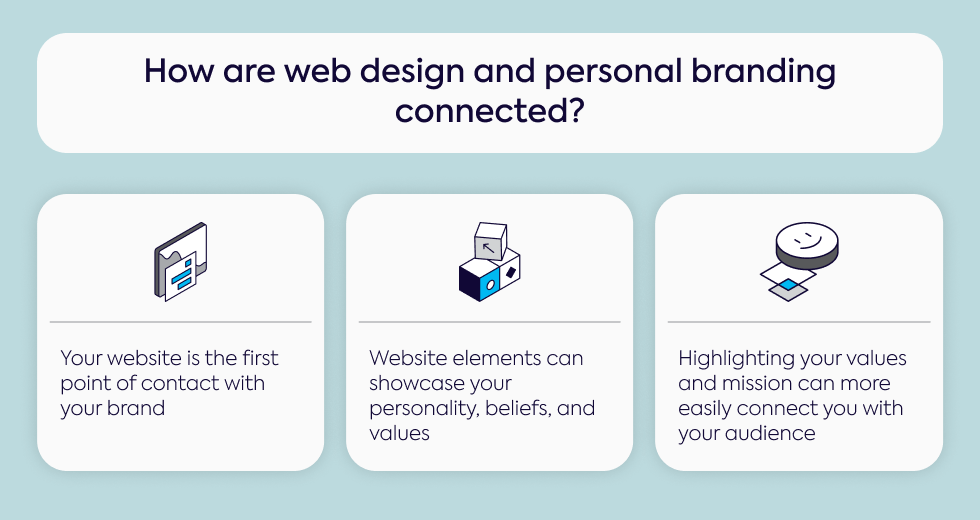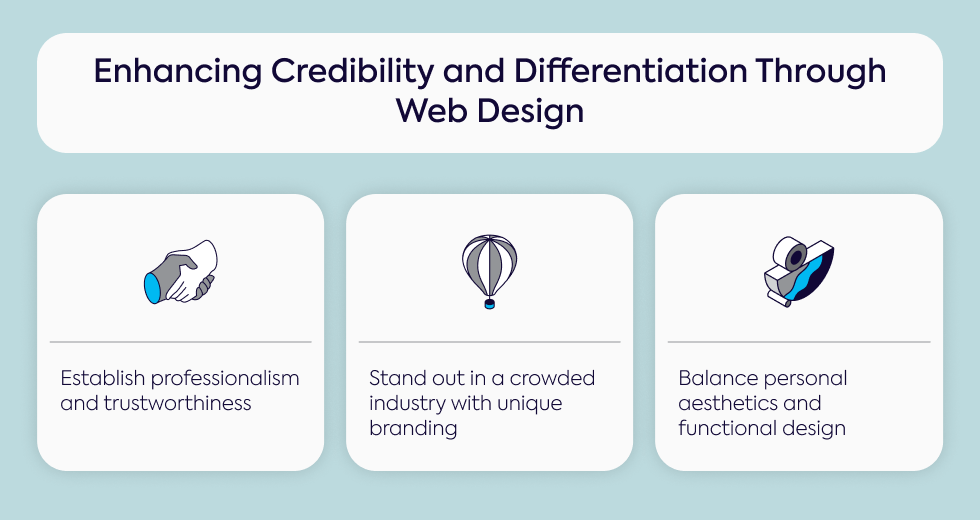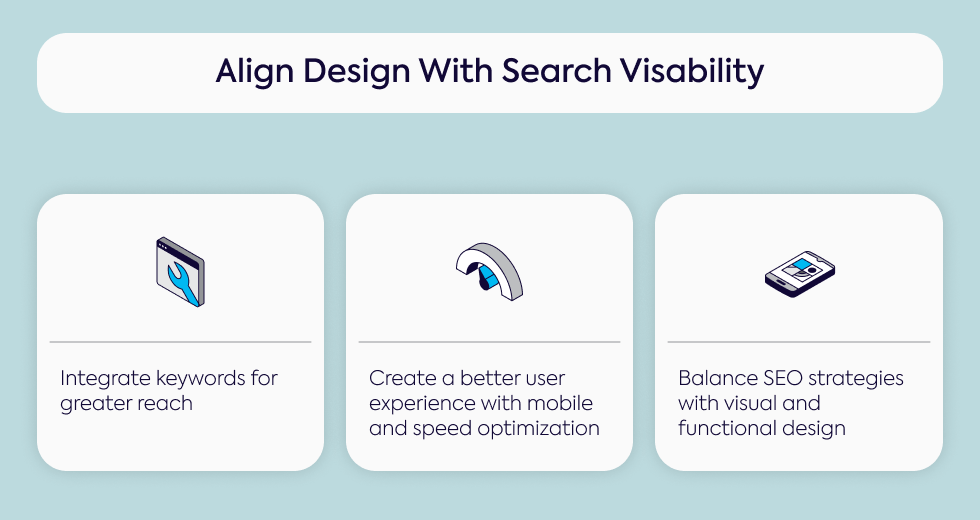Key Takeaways
- Web design reflects personal branding: Your website design is often the first impression you give to potential clients or employers. Elements like color schemes, typography, and layout help communicate your values and build trust by showcasing professionalism and consistency across your online presence.
- Visual branding and consistency matter: The design of your website, including color, font choice, and layout, shapes how your audience perceives your core values. Consistent visuals help reinforce your brand's messaging and ensure your values are communicated clearly.
- Using multimedia to convey values: Incorporating high-quality images, videos, and graphics strengthens your website design by showcasing your values in action. These visual elements create emotional connections with your audience and enhance your branding strategy.
- User experience and personal value: A seamless user experience, with easy navigation and fast loading times, reflects a commitment to usability. It enhances trust and helps communicate your values by keeping users engaged.
- Communicate your Unique Selling Proposition (USP): Your USP should be clear throughout your website, aligned with your core values, and supported by testimonials or case studies to reinforce credibility.
- Balance personal aesthetics with functionality: While your design should reflect your personal brand, it’s important to maintain a balance with functionality. A well-optimized, visually appealing, and mobile-responsive design helps support both SEO and user experience goals.
Understanding the Role of Web Design in Communicating Personal Value
The Connection Between Web Design and Personal Branding
Your web design plays a key role in defining your personal brand.
It’s more than just a digital presence—it’s often the first point of contact that clients or employers have with you.
This is where you can demonstrate your commitment to professionalism through consistent visuals and thoughtful design choices.
Elements like color schemes, typography, and layout work together to showcase your personality, beliefs, and values.
Effective branding highlights your Unique Selling Proposition (USP), helping you stand out from the competition.
With a well-thought-out design, you can build trust, as users will associate a high-quality site with professionalism.
A mobile-responsive design also improves credibility and ensures that you reach users wherever they are.

Why Web Design Reflects Personal Values and Authenticity
The way you communicate your personal values through web design can have a profound impact on your audience.
Through elements like your logo, color scheme, and typography, you reinforce your values and mission.
Every aspect of the site, from the layout to the content, should align with your personal values to create a unified and authentic brand message.
Your web design should also communicate deeper emotions and connections.
Through the thoughtful use of visuals and content, you can create a site that resonates with your audience on a personal level, which can help build lasting relationships. Including features like mission statements and case studies further demonstrate your values and increase your credibility.
Key Web Design Elements That Reflect Your Personal Values
Visual Branding – Color, Typography, and Layout Choices
Elements like typography, font choice, and color schemes shape the emotional response of your users.
Whether you opt for a minimalist design or something more vibrant, your design choices should reflect your personality and what matters most to you.
The layout of your site impacts how easy it is to navigate and how your content is perceived, so it’s important that it aligns with your values.
For example, if you’re aiming to convey trust and stability, colors like blue can be a great fit.
Similarly, your font selection should align with your brand’s tone—whether that’s a modern, bold look or a more sophisticated style.
Lastly, an intuitive layout that balances aesthetics with functionality creates a smoother user experience.
Consistent Messaging and Visual Identity
Maintaining consistent branding and messaging is key to building a recognizable brand.
Your design elements should be consistent across all platforms, reinforcing your brand’s values at every touchpoint.
By focusing on a cohesive visual identity and clear messaging, you ensure that your values are communicated effectively to users.
You should always strike a balance between creativity and clarity, making sure that your site’s visuals support your message rather than distract from it.
Whether through color, typography, or imagery, consistency helps your audience understand what your brand stands for.
Using Multimedia (Images, Videos, Graphics) to Showcase Your Values
Multimedia elements can be a powerful way to showcase your personal or business values.
Well-chosen images and graphics can demonstrate your commitment to principles such as sustainability, innovation, or quality.
Incorporating videos into your design allows you to live out that value by telling stories that create emotional connections with visitors.
However, it’s important to note that poor design can harm credibility.
If multimedia elements are distracting or of low quality, they may detract from your core message rather than support it.
Always use visuals that reflect the tone and ethos of your brand to maintain authenticity.
Crafting an “Our Values” Section or Page
Having a page dedicated to your values is a clear and direct way to communicate what your business stands for.
This values section should explain not just what your values are, but how they apply to your services or products.
It’s important to clearly communicate these principles in a way that’s relatable to your audience, offering examples through case studies or testimonials.
Including real-life stories or examples of these values demonstrating them in action helps humanize your brand, while visuals such as photos and videos make them more tangible.
This page should be easily accessible from the main navigation so that potential customers can find and connect with it effortlessly.

Strategies for Communicating Personal Value Through Web Design
Defining Your Unique Selling Proposition (USP)
Your Unique Selling Proposition (USP) is what sets your business apart from competitors.
It’s important to highlight USP throughout your website, especially in key areas like the homepage or landing pages.
You need to effectively communicate what makes your services or products unique in a way that grabs visitors' attention and explains how you solve their problems better than anyone else.
Aligning your USP with your brand values is essential. This alignment not only makes your offering more credible but also helps foster trust.
Including testimonials or case studies further reinforces your USP by showing how it delivers results.
Creating a Seamless User Experience to Enhance Value
A good user experience is fundamental to keeping visitors engaged with your website.
A site that can create a user-friendly experience will keep users on the page longer and increase their likelihood of conversion.
Features like an intuitive navigation menu help users find the information they need quickly, which makes them more likely to trust your brand.
Beyond that, users should be able to easily find important information, whether on mobile or desktop, without getting frustrated.
Factors like fast loading times and clear navigation contribute to a positive overall experience.
Engaging Users Through Interactive Features
Incorporating interactive features can increase engagement and encourage users to engage with your brand.
Interactive portfolios or infographics can be great tools for sharing your values and achievements, while quizzes or polls offer a fun way for users to learn more about your brand.
These features also help communicate your creativity and your willingness to partner with organizations that align with your values.
Additionally, incorporating elements like chatbots or interactive call-to-action buttons can further improve user experience.
Encouraging visitors to contact us today can provide a direct connection to your services.
Storytelling Through Design – How to Share Your Mission
Telling your story through design is one of the most impactful ways to connect with your audience on a personal level.
Use elements like your logo, font, and color scheme to reflect your mission, while a dedicated “Our Values” page can expand on this narrative.
Incorporating visuals like photos or videos to showcase your brand’s journey allows users to feel more connected to what you stand for.
You can demonstrate your commitment to your values by sharing case studies or milestones that show your brand’s growth.
This approach will effectively communicate your personal value to your audience, establishing credibility and authenticity.

Enhancing Credibility and Differentiation Through Web Design
Establishing Professionalism and Trustworthiness
A trustworthy website is vital in building confidence with your visitors.
Elements like a well-designed layout and high-quality images help to convey a sense of professionalism.
Additionally, displaying certifications or awards you’ve earned can reassure users that you’ve gone the extra mile to offer top-notch services.
When people trust your brand, they’re more likely to engage with it, whether that means making a purchase, signing up for a service, or reaching out for more information.
A fast, responsive, and user-friendly site helps reinforce this trust by creating a seamless experience.
Standing Out in a Crowded Industry with Unique Branding
Leveraging your brand’s values can help you differentiate your business from the competition.
Using unique elements like personal logos or distinctive design features gives your website personality and makes it memorable.
These design elements can demonstrate your expertise and help to highlight your USP more effectively.
Testimonials, success stories, and strong visuals further add to the sense of uniqueness and establish a lasting impression with your audience.
Balancing Personal Aesthetic with Functional Design
It’s important to balance the design elements that reflect your personal brand with functionality that enhances usability.
While it’s tempting to focus on your personal lives or creative flair, usability and performance are key factors to keep in mind.
Incorporating SEO strategies within a visually appealing site will help your audience find you more easily.
Focusing on visual hierarchy can also ensure that your website’s aesthetics align with functional needs, such as readability and fast loading times.
A well-designed site doesn’t just look good—it works well, too.

SEO and Web Design: Aligning Design with Search Visibility
Integrating Keywords into Your Website for Greater Reach
Strategic use of SEO can make a huge difference in how well your website ranks on search engines.
Incorporating relevant keywords that match your brand identity will boost visibility and help users find your site more easily.
Remember to optimize images by including keyword-rich alt text.
Ensure that you don’t overwhelm the design with too many keywords. Instead, include important information naturally to create a website that both search engines and users can appreciate.
Optimizing for Mobile and Speed to Improve User Experience
Having mobile responsiveness is essential, as more users are accessing websites from their smartphones and tablets.
Pages that are fast-loading help reduce frustration and keep users from leaving your site prematurely. One way to ensure this is to compress images without sacrificing quality.
Make sure your site is touch-friendly and easy to navigate across all devices.
This will not only improve the user experience but will also give your site a better chance of ranking higher in search engine results.
Balancing SEO Strategies with Visual and Functional Design
While integrating SEO is important, it’s essential to balance SEO strategies with a design that is still visually engaging and easy to use.
Don’t let keywords or optimization overshadow the authentic message of your brand.
Instead, aim for content that’s easy to read and maintains authenticity while still supporting SEO goals.
A good design should not only appeal to search engines but also create a smooth experience for your users.
The goal is to support SEO without detracting from the visual appeal or usability of the site.

Tips for Continuous Improvement in Web Design and Personal Branding
Conducting Market Research to Refine Your Target Audience
Regularly conducting market research helps you stay on top of what your target audience wants and expects.
Take the time to analyze competitors to find ways to refine your USP and meet evolving needs.
Through market research, you can adjust your design and messaging to resonate better with your audience.
By understanding why they should choose your brand over others, you’ll be able to sharpen your brand identity and increase engagement.
Updating and Evolving Your Design to Reflect Growth
As your brand grows, so should your website. Evolve your design to reflect the changes in your personal values, services, or goals.
Use feedback and analytics to track which pages or features users interact with most, and make updates accordingly.
Ensuring that your site remains mobile-responsive and prioritizing page speed optimization will keep your website running smoothly, even as technology and user expectations change.

Hiring a Professional Designer vs. Learning Web Design Skills Yourself
There are pros and cons to both hiring a professional designer and doing the work yourself.
A professional brings the expertise needed for a polished and responsive site, but the DIY route offers long-term flexibility and control over updates.
For complex projects, it may be best to leave things to the professionals, while smaller updates can be done on your own.
Deciding which option is best will depend on your budget, timeline, and how involved you want to be in the design process.
Ready to Elevate Your Brand Through Strategic Web Design? Let’s Talk!
Your website is more than just a digital presence—it’s the first impression that defines your personal value.
At Gauss, we understand the power of a well-crafted web design in communicating your unique identity and building trust with your audience.
Whether it’s aligning your site with your personal values, improving usability, or integrating visuals that truly resonate, we’re here to help you stand out.
Let’s collaborate to create a custom solution that showcases your brand and drives results. Contact us today to start a conversation about how we can turn your vision into reality!
Learn more about our services here.
